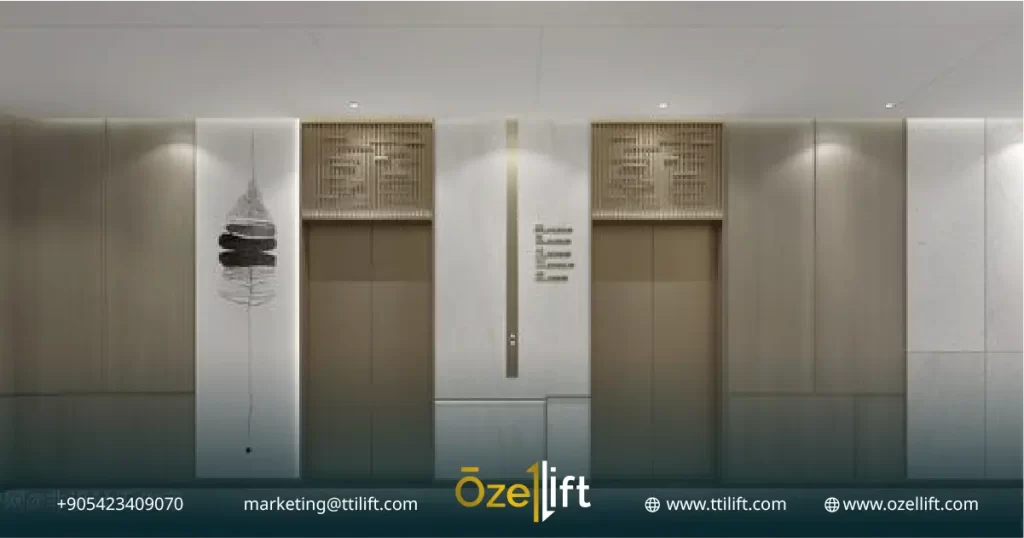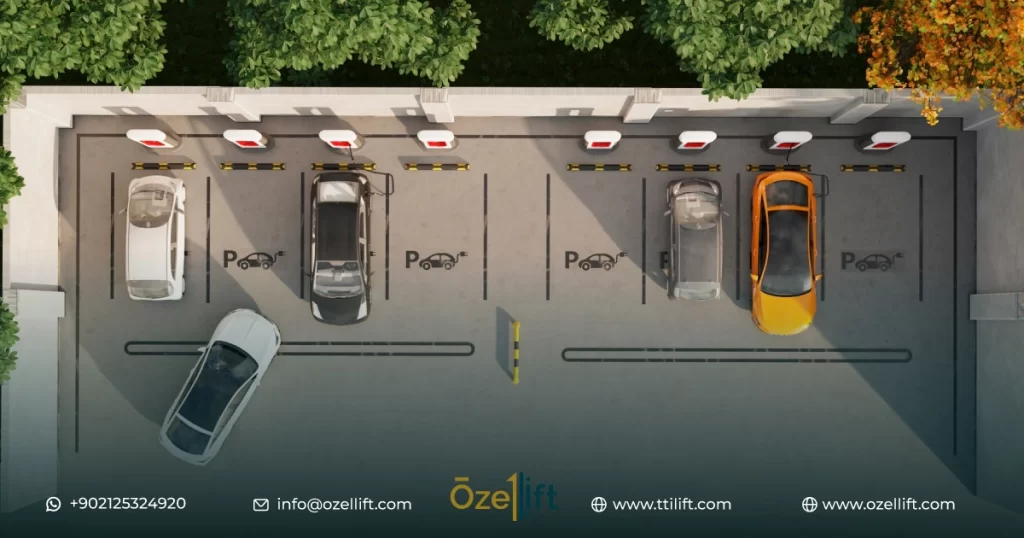Understanding elevator door dimensions is crucial for ensuring passenger safety, accessibility, and overall elevator efficiency.
From residential homes to commercial buildings, the size and operation of elevator doors impact daily life. This article delves into the intricacies of elevator door dimensions, exploring standard measurements, factors influencing size, and code requirements. Additionally, we’ll examine how elevator doors open to optimize passenger flow and accessibility. By grasping these essential details, you can make informed decisions when designing, installing, or maintaining elevators.
Standard Elevator Door Dimensions
Disclaimer: While there are general standards, specific elevator door dimensions can vary based on factors like building type, accessibility requirements, and local regulations. It’s always recommended to consult with a professional elevator technician or engineer for precise measurements and compliance.
General Guidelines of elevator door dimensions
That said, here’s a general overview of standard elevator door dimensions:
Passenger Elevators
- Width: Typically ranges from 3 to 4 feet (0.91 to 1.22 meters).
- Accessibility: To accommodate wheelchairs, many elevators have a minimum door width of 36 inches (0.91 meters) to comply with ADA standards.
Freight Elevators
- Width: Often wider than passenger elevators, typically ranging from 4 to 5 feet (1.22 to 1.52 meters) to accommodate larger items.
Residential Elevators
- Width: Generally smaller than commercial elevators, often around 2.5 to 3 feet (0.76 to 0.91 meters) to fit within residential spaces.
Important Considerations
- Building Codes and Regulations: Local building codes and accessibility standards dictate minimum elevator door dimensions.
- Elevator Capacity: The number of people or amount of weight an elevator can carry will influence door size.
- Shaft Size: The elevator shaft dimensions will determine the maximum possible door size.
If you’re planning to install or modify an elevator, it’s crucial to consult with a qualified elevator contractor to ensure compliance with all applicable regulations and to determine the optimal door size for your specific needs – contact ozellift now.
Factors Affecting Elevator Door Size
The size of an elevator door is a crucial aspect of elevator design and function, influenced by several factors:
Building and Usage-Related Factors:
- Building Type: Commercial, residential, or industrial buildings have different traffic patterns and load requirements, impacting door size.
- Occupancy: The number of people using the elevator determines the required door width for efficient passenger flow.
- Traffic Patterns: Peak hours, frequency of use, and passenger demographics influence door size.
- Accessibility Requirements: Compliance with ADA standards mandates specific door widths for wheelchair accessibility.
- Cargo Capacity: Freight elevators require wider doors to accommodate larger items.
Technical and Structural Factors:
- Elevator Capacity: The number of people or weight the elevator can carry affects door size.
- Shaft Dimensions: The physical space available for the elevator and its door limits the maximum size.
- Counterweight and Machinery: The elevator’s internal components can restrict door dimensions.
- Door Type: Different door types (center-opening, sliding, telescopic) have varying space requirements.
- Building Codes and Regulations: Local regulations impose standards for elevator door size and safety.
Additional Considerations:
- Aesthetics: Door size can impact the overall visual appearance of the elevator and building.
- Emergency Access: Sufficient door width is essential for emergency evacuations.
- Maintenance and Repair: Door size should allow for easy maintenance and repair.
It’s important to note that these factors often interact, and the optimal door size is determined through careful planning and consideration of all relevant aspects.
know more about
elevator door types
Electric Traction Elevator Systems
Common Elevator Door Heights
Elevator door heights typically range from 7 to 8 feet (2.1 to 2.4 meters). This standard height accommodates most passengers comfortably and allows for adequate clearance. However, specific heights can vary based on elevator type, building design, and local regulations.
Elevator Door Material and Thickness
The choice of material and thickness for elevator doors is crucial for safety, durability, and aesthetics.
Common Materials:
- Stainless Steel: The most popular choice due to its strength, durability, corrosion resistance, and clean appearance. It’s often used for both the door panels and frame.
- Aluminum: Lighter weight than stainless steel, but still offers good strength and corrosion resistance. Often used for modern or minimalist designs.
- Wood: Primarily used for aesthetic purposes in high-end residential or commercial buildings. Requires special treatment for durability and fire resistance.
Thickness:
The thickness of elevator door panels can vary depending on the material, door type, and safety requirements. However, typical ranges are:
- Stainless steel: 1.2mm to 1.5mm for panels.
- Aluminum: Can be thinner due to its lighter weight, but typically around 1mm to 2mm.
- Wood: Varies greatly depending on the type of wood and construction method, but can be thicker than metal options for insulation and soundproofing.
Note: The door frame and supporting structure will generally be thicker than the panels to ensure structural integrity and safety.
Would you like to know about specific elevator door types or have other questions about materials? Contact ozellift now.
Elevator doors opening mechanisms
Elevator door opening mechanisms are designed for safety, efficiency, and smooth operation. Here are the primary types:
Common Elevator Door Opening Mechanisms:
- Center-opening doors: These doors divide into two equal parts, opening outwards from the center. They are common in both passenger and freight elevators.
- Side-opening doors: These doors slide open to one side,
similar to sliding doors. They are often used in smaller elevators or where space is limited. - Telescopic doors: These doors fold into themselves as they open, saving space and providing a wider opening. They are commonly found in high-rise buildings.
Key Components of an Elevator Door Opening Mechanism:
- Operator: The motor and gear system that drives the door opening and closing.
- Door panels: The individual sections of the door.
- Guides: Tracks or rails that guide the door panels during movement.
- Safety edges: Rubber or plastic strips along the door edges that prevent closing if an obstruction is detected.
- Interlocks: Mechanisms that prevent the elevator from moving until the doors are fully closed.
Elevator Door Speed and Safety Features
Elevator door speed is carefully regulated for safety and passenger comfort.
Typically, doors open and close at a moderate pace to prevent accidents and injuries. Excessive speed can pose risks to passengers, especially children and the elderly.
Safety Features
Modern elevator doors incorporate numerous safety features to protect passengers:
- Safety edges: Rubber or plastic strips along the door edges that reverse the door’s movement if an obstruction is detected.
- Photoelectric sensors: Detect objects in the doorway and prevent closure.
- Door operators with torque limiters: Prevent excessive force on the doors, reducing the risk of injury.
- Interlocks: Prevent the elevator from moving unless the doors are fully closed.
- Emergency release mechanisms: Allow manual opening of the doors in case of power failure or malfunction.
- Obstacle detection systems: Advanced systems using laser or other technologies to detect obstructions more accurately.
These safety features work together to ensure a secure and comfortable elevator experience.
Need more help? Contact Ozellift for expert advice and customized elevator door solutions.
Maintenance and Troubleshooting Elevator Doors
Proper maintenance and timely troubleshooting are essential for ensuring the safe and efficient operation of elevator doors.
Routine Maintenance
Regular inspections and maintenance by qualified technicians are crucial to prevent issues and extend the life of elevator doors. Key maintenance tasks include:
- Lubrication: Applying lubricant to moving parts like hinges, rollers, and tracks to reduce friction and wear.
- Cleaning: Removing dirt, debris, and fingerprints from door panels and components.
- Inspection: Checking for signs of wear, damage, or misalignment in door panels, tracks, rollers, and safety devices.
- Adjustment: Aligning door panels and adjusting door closing speed to ensure proper operation.
- Safety device testing: Regularly testing safety edges, photoelectric sensors, and interlocks to ensure they function correctly.
Common Elevator Door Issues and Troubleshooting
While professional technicians should handle most elevator repairs, understanding common issues can help identify potential problems. Here are some examples:
- Door not closing completely: Check for obstructions, worn seals, or damaged safety edges.
- Door opening slowly or hesitating: Inspect for worn or damaged rollers, tracks, or motor issues.
- Door closing too fast: Adjust door closing speed settings or check for faulty safety devices.
- Door opening or closing erratically: Inspect safety edges, photoelectric sensors, and door operator for malfunctions.
- Excessive noise: Check for worn components, loose parts, or misalignment.
Important: Always prioritize safety when troubleshooting elevator doors. If you encounter any issues, contact a qualified elevator technician immediately.
Need help selecting the right elevator door for your project? Ozellift offers a wide range of elevator door types and customization options to meet your specific needs. Contact us today for a free consultation and quote.
Need help selecting the right elevator door for your project? Ozellift offers a wide range of elevator door types and customization options to meet your specific needs. Contact us today for a free consultation and quote.
What is the standard width of an elevator door?
Typically 3 to 4 feet (0.91 to 1.22 meters) for passenger elevators.
What is the standard height of an elevator door?
Usually 7 to 8 feet (2.1 to 2.4 meters).
How do I calculate elevator door opening area?
Multiply width by height (e.g., 3 ft x 7 ft = 21 square feet).
How do elevator doors open?
Common types include center-opening (two halves), side-opening (sliding), and telescopic (folding).



